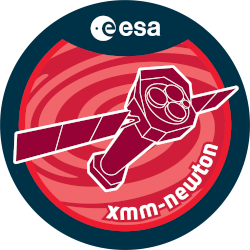

| Proposal ID | 040340 |
| Title | The short-period recurrent nova T Pyx; a wind-driven supersoft source? |
| Download Data Associated to the proposal | https://nxsa.esac.esa.int/nxsa-sl/servlet/data-action-aio?obsno=0403400101 |
| DOI | https://doi.org/10.5270/esa-9sugtdl |
| Principal Investigator, PI | Dr Daniel Steeghs |
| Abstract | The recurrent nova T Pyx is an intriguing accreting binary because of itsprolific outburst behaviour, large quiescent luminosity, short orbital periodand rapid orbital period evolution. An unusually high mass-accretion rate isimplied and it has even been proposed continuous nuclear burning may occur onthe accreting white dwarf. Systems with a massive white dwarf accreting at highrates are potential Type Ia progenitors. Our proposed XMM observations willestablish if a wind-driven supersoft source scenario is indeed at play in T Pyx,or whether its X-ray luminosity demands an alternative evolutionaryinterpretation. These observations will thus have important implications fornovae, super-soft sources and cataclysmic variable evolution. |
| Publications |
|
| Instrument | EMOS1, EMOS2, EPN, OM, RGS1, RGS2 |
| Temporal Coverage | 2006-11-09T19:00:01Z/2006-11-10T09:10:09Z |
| Version | 17.56_20190403_1200 |
| Mission Description | The European Space Agencys (ESA) X-ray Multi-Mirror Mission (XMM-Newton) was launched by an Ariane 504 on December 10th 1999. XMM-Newton is ESAs second cornerstone of the Horizon 2000 Science Programme. It carries 3 high throughput X-ray telescopes with an unprecedented effective area, and an optical monitor, the first flown on a X-ray observatory. The large collecting area and ability to make long uninterrupted exposures provide highly sensitive observations. Since Earths atmosphere blocks out all X-rays, only a telescope in space can detect and study celestial X-ray sources. The XMM-Newton mission is helping scientists to solve a number of cosmic mysteries, ranging from the enigmatic black holes to the origins of the Universe itself. Observing time on XMM-Newton is being made available to the scientific community, applying for observational periods on a competitive basis. |
| Creator Contact | https://www.cosmos.esa.int/web/xmm-newton/xmm-newton-helpdesk |
| Date Published | 2007-12-08T00:00:00Z |
| Last Update | 2025-08-04 |
| Keywords | "XMM", "prolific outburst", "continuous nuclear burning", "super soft sources", "cataclysmic variable evolution", "recurrent nova", "accreting white dwarf", "short orbital period", "xray luminosity demands", "alternative evolutionary", "intriguing accreting binary", "mass accretion rate", "quiescent luminosity" |
| Publisher And Registrant | European Space Agency |
| Credit Guidelines | European Space Agency, Dr Daniel Steeghs, 2007, 'The short-period recurrent nova T Pyx; a wind-driven supersoft source?', 17.56_20190403_1200, European Space Agency, https://doi.org/10.5270/esa-9sugtdl |